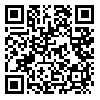Volume 8, Issue 2 (2018)
ORMR 2018, 8(2): 93-111 |
Back to browse issues page
Khalil Sajjadi1  , MohammadAli Khatami FirouzAbadi
, MohammadAli Khatami FirouzAbadi  2, Mohammad Taghi Taghavifard3
2, Mohammad Taghi Taghavifard3  , Jahanyar Bamdadsoufi4
, Jahanyar Bamdadsoufi4 
 , MohammadAli Khatami FirouzAbadi
, MohammadAli Khatami FirouzAbadi  2, Mohammad Taghi Taghavifard3
2, Mohammad Taghi Taghavifard3  , Jahanyar Bamdadsoufi4
, Jahanyar Bamdadsoufi4 
1- PhD student in Operational Research Management , Department of Management and Accounting, Allameh Tabataba’i University, Tehran, Iran
2- Associate Professor , Department of Management and Accounting , Allameh Tabataba’i University, Tehran, Iran
3- Associate Professor , Department of Management and Accounting , Allameh Tabataba’i University, Tehran, Iran
4- Assistant Professor, Department of Management and Accounting, Allameh Tabataba’i University, Tehran, Iran
2- Associate Professor , Department of Management and Accounting , Allameh Tabataba’i University, Tehran, Iran
3- Associate Professor , Department of Management and Accounting , Allameh Tabataba’i University, Tehran, Iran
4- Assistant Professor, Department of Management and Accounting, Allameh Tabataba’i University, Tehran, Iran
Abstract: (7824 Views)
Knowing customer behavior patterns, clustering and assigning them is one of the most important purpose for banks. In this research, the five criteria of each customer, including Recency, Frequency, Monetary, Loan and Deferred, were extracted from the bank database during one year, and then clustered using the customer's K-Means algorithm. Then, the multi-objective model of bank service allocation was designed for each of the clusters. The purpose of the designed model was to increase customer satisfaction, reduce costs, and reduce the risk of allocating services. Given the fact that the problem does not have an optimal solution, and each client feature has a probability distribution function, simulation was used to solve it. In order to determine the neighbor optimal solution of the Simulated Anneling algorithm, neighboring solutions were used and a simulation model was implemented. The results showed a significant improvement over the current situation. In this research, we used Weka and R-Studio software for data mining and Arena for simulation for optimization. The results of this research were used to develop Business Intelligence software for customers in one of the private banks of Iran.
Article Type: scientific research |
Subject:
Organizational Behavior and Human Resource Management
Received: 2018/01/21 | Published: 2018/09/15
Received: 2018/01/21 | Published: 2018/09/15
| Rights and permissions | |
 |
This work is licensed under a Creative Commons Attribution-NonCommercial 4.0 International License. |

